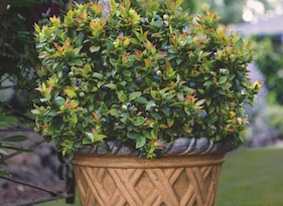+86- 111****
Boluo county dragon Lotus Lake Village Town Industrial Park, China

I’d like to introduce you to the BrazelBerries Jelly Bean blueberry bush. How appropriate, since Easter was just a few days ago.
Jelly Bean, like the previous Peach Sorbet blueberry I mentioned a few weeks ago, does triple duty in the garden.
The BrazelBerries Jelly Bean blueberry is even smaller than it’s cousin, Peach Sorbet. It grows to just 1- to 2-feet tall and an equal width. From an ornamental perspective, Jelly Bean’s diminutive size fills an important spot in the residential landscape. With its 2-foot rounded shape, it is just the right size to line a walkway without getting too much in the way. Jelly Bean works great in pots on patios, porches, small walks, and the like.
Mid summer, Jelly Bean produces a bountiful crop of unusually sweet blueberries. Many varieties of blueberries can be a bit tart, so Jelly Bean’s sweetness is welcomed.
Green to dark-green leaves are fresh and welcoming in the spring, and bushes planted in cool climates produce red-tinged leaves, adding another color to its story. And it is a fairly good plant in cool climates, too, being hardy in USDA Zones 4-7.
In a time when folks are looking for value, having one plant fill three purposes is terrific.
Some general notes about what makes blueberry bushes happy:
-They enjoy slightly acidic soils. It’s likely your soil isn’t acidic enough (unless you live in a pine forest), so adding some acidic materials such as pine needles to your soil is a good idea.
-They’ll tolerate partial sun, but will produce lots of berries given full sun.
-They like a well-draining but moist soil.
-Prune out older wood from the blueberry bush, as berries are produced on wood that is less than five years old or so.
-As with any bush, thinning out the interior of the bush will also help decrease chances of disease.